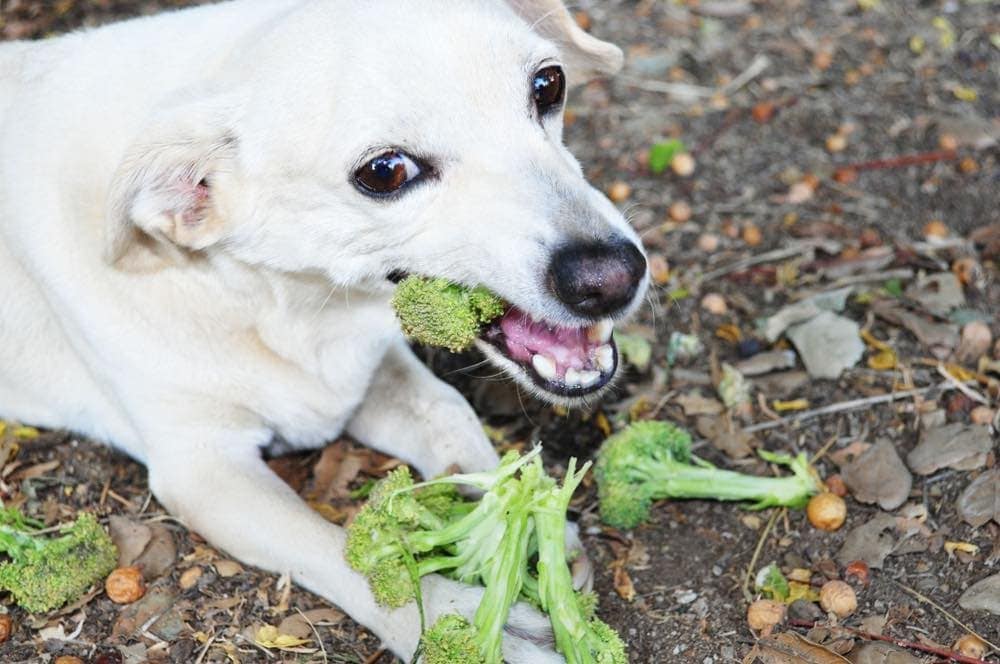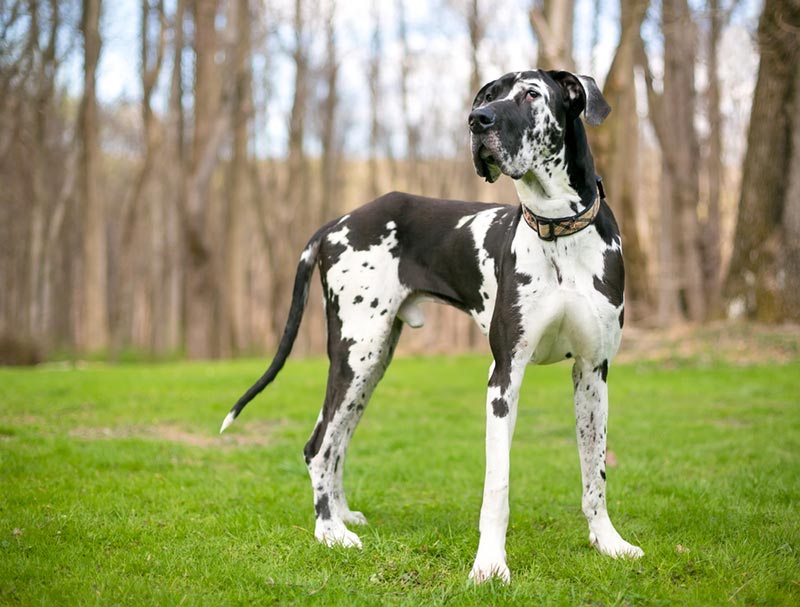How Big Does a Great Pyrenees Get? With Growth & Weight Chart

Updated on
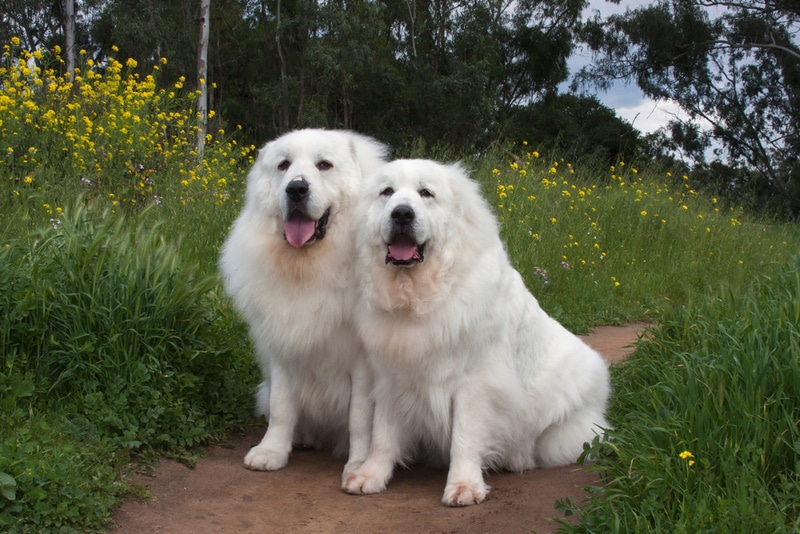
Click to Skip Ahead
Monitoring your dog’s growth, especially when they are still puppies, is vital to ensure they are developing appropriately. Each dog is unique. Some can be smaller or larger than the breed average, so it’s helpful to regularly check your dog’s growth and weight to see if they are on course.
The Great Pyrenees is a large breed prone to obesity, so if you own a Great Pyrenees, this article has valuable information to help you monitor their growth and keep their weight on track.
Great Pyrenees Overview
The Great Pyrenees is a large, fluffy ball of affection. They were initially bred to defend sheep from predators in the icy Pyrenees Mountain region, but today, they are gentle companions and watchful protectors of the house and family. They are loving and intelligent and cherish being part of family activities.
The large Great Pyrenees are often described as majestic. They are adorned with an all-white, luxurious coat and muscular frame. While docile with their family, they will quickly spring into action when faced with a potential threat.
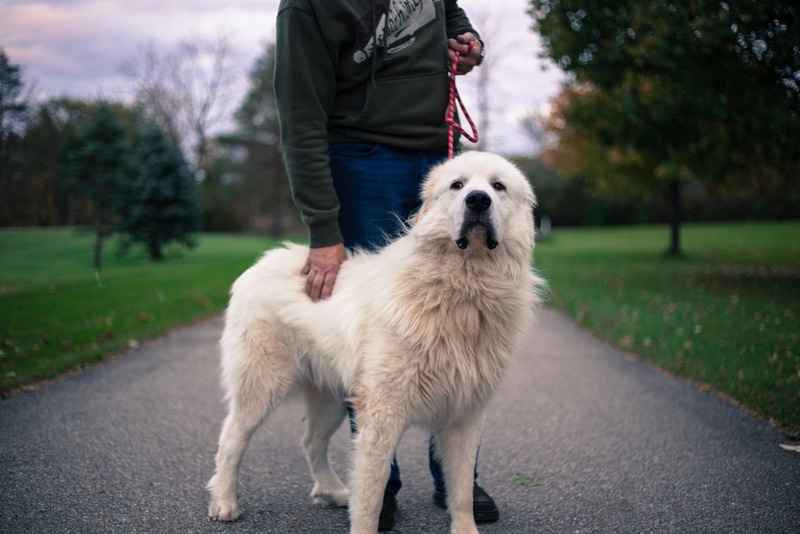
Great Pyrenees Size and Growth Chart
The Great Pyrenees is a large, powerful breed that can reach a height of up to 32 inches and weigh over 100 pounds. However, their size and weight will naturally vary through their life stages and depend on other factors such as genetics, nutrition, and health.
Don’t worry too much if your puppy is ahead or behind the numbers in this chart. Our Great Pyrenees size chart comprises approximations based on the typical weight for each age group. Continue taking your pet in for routine checkups, and talk to the veterinarian about any worries you may have about your Great Pyrenees’ size, development, or weight.
| Age | Male Weight
Range |
Female Weight Range |
| 1 month | 5–10 pounds | 5–10 pounds |
| 2 months | 15–30 pounds | 10–25 pounds |
| 3 months | 30–40 pounds | 25–35 pounds |
| 4 months | 45–55 pounds | 35–45 pounds |
| 5 months | 60–70 pounds | 45–55 pounds |
| 6 months | 70–80 pounds | 50–60 pounds |
| 7 months | 75–85 pounds | 55–65 pounds |
| 8 months | 80—90 pounds | 60–70 pounds |
| 9 months | 85–95 pounds | 65–75 pounds |
| 10 months | 90–100 pounds | 70–85 pounds |
| 11 months | 95–105 pounds | 70–90 pounds |
| 12 months | 100–115 pounds | 80–95 pounds |
| 24 months | 100–125 pounds | 85–100 pounds |
When Does a Great Pyrenees Stop Growing?
The Great Pyrenees will typically reach their full height at around 12 months old, but their weight will continue to increase until they’re 2 years old. Because they are a large breed, Great Pyrenees grow slower than most dogs and take longer to reach their adult size. Most Great Pyrenees puppies take up to 2 years to mature and develop a full chest.
Based on their age, you can reasonably assume where your puppy is in their growth stage. You can also examine your puppy’s paws. Large paws are a typical puppy characteristic that shows how much room there is for growth.
Most puppies never grow larger than their largest parent. If you purchased your Great Pyrenees puppy from a breeder, get in touch with them to learn more about the ideal size for your dog based on the size of the past litter and the parents.
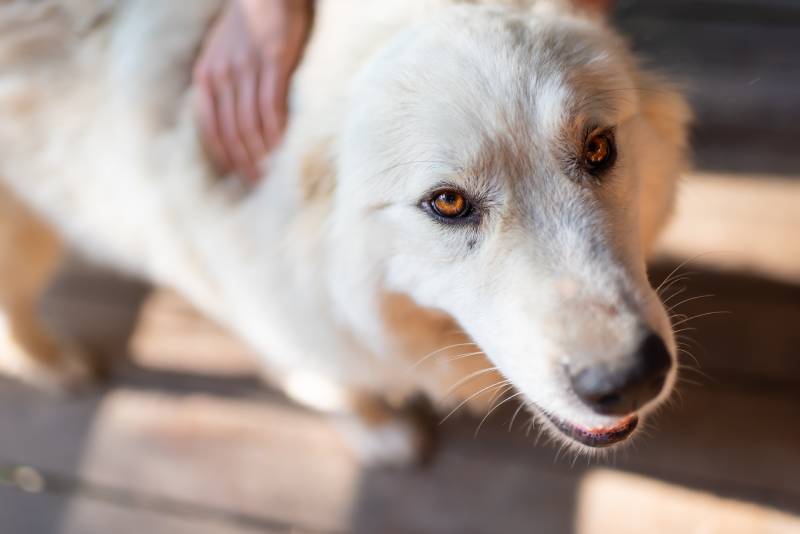
Factors Affecting the Size of a Great Pyrenees
Numerous factors can affect the size of your Great Pyrenees.
- They may have growth plateaus or spurts that accelerate or slow the overall growth. These can happen at any point in your dog’s growth stage, but there is no need to worry because it is normal.
- Even though size is a trait inherited from past generations, some dogs might be bigger or smaller than others. Looking at the size of your dog’s parents can typically give you an idea of how big your Pyrenees will grow. However, this is merely an estimation and can be considerably off the mark.
- Nutrition is the most important factor that contributes to your dog’s size. It has a significant impact on your dog’s growth and development. The quantity of food your Pyrenees eat will vary depending on their size, age, and energy level.
- According to research, early spaying or neutering affects your dog’s growth plate. It delays its closure and may result in your dog growing taller than normal.
- If your dog is in poor health, it can significantly affect their growth, so it’s important to provide the best care and keep up with regular veterinary checks, especially if your dog seems unwell.
Ideal Diet for Maintaining a Healthy Weight
In general, a Great Pyrenees will thrive on a food formulated for large breeds and suitable for their current stage of development. However, your Great Pyrenees’ needs must be considered when choosing the best diet. While choosing a brand with excellent ingredients is always important, talking about it with your veterinarian is best. They can provide advice based on your pup’s caloric needs and health history.
The most crucial factor in their nutrition is feeding them a high-quality food that is well-balanced and approved by your veterinarian. Every 6 months is the ideal time to weigh your puppy, but if they suffer from health issues, you should weigh them every 3 months.
The Great Pyrenees will eat as much as you feed them, so it’s crucial not to overfeed them. Excessive weight gain can lead to obesity and might result in further health issues.
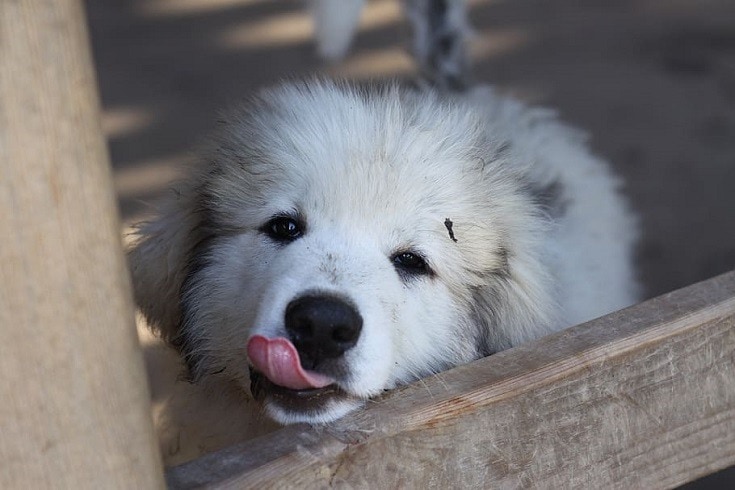
How to Measure Your Great Pyrenees
A Great Pyrenees’ height is determined by measuring them from the ground to the highest point between the shoulder blades, known as the withers. To get a measurement of your dog’s height, allow your Great Pyrenees to stand up straight against a wall. You can use a treat to encourage your dog to stay. Use a tape measure to measure from the withers to the ground.
Due to their size, it is preferable to weigh your Great Pyrenees in a veterinarian’s office; however, if you can lift your dog, you can weigh them on a bathroom scale at home.
Step on the scale first, then record your weight. Next, pick up your pup and stand on the scale.
The first weight should then be deducted from the second to determine your puppy’s weight. If your Great Pyrenees is too heavy to carry, you can place a platform over the scale for your dog to stand on. You will then follow the same steps but deduct the total weight from the weight of the platform to determine your dog’s weight.
Conclusion
As you can see, the Great Pyrenees is a large dog that, at full size, has a considerable weight and height. You can use our Great Pyrenees growth chart if you just got a new puppy to see what to expect as they develop, but it’s always best to check with your veterinarian to ensure your dog is healthy and growing correctly.
Featured Image Credit: Danita Delimont, Shutterstock




